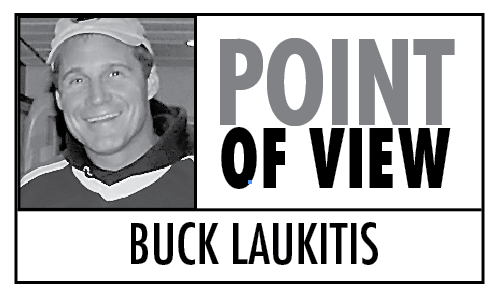Why is more of the halibut resource wasted in the Bering Sea than landed and sold? Thirteen out of fourteen fish in the Central Bering Sea will be wasted next season. Overall the entire Bering Sea will only have 2.4 million pounds of halibut that can be sold in 2015 while more than 6 million pounds will be killed and thrown overboard as bycatch.
Halibut connect people throughout the state of Alaska. From Ketchikan to St. Lawrence Island to Adak, halibut feed our families. We subsist on, find enjoyment with, traditionally revere and honor these fish. Sport, subsistence, charter and commercial fishermen all depend on halibut. Our muscles strain to land them, and in turn their muscles make us stronger and sustain us.
Why do we allow this resource to be wasted and ruined? These conscious acts are going to ruin us. This is not how we should manage fish so important to us as Alaskans.
Coastal communities throughout the state depend on halibut. We build boats and trailers, hire welders and diesel mechanics, shop at grocery stores and tackle shops, fill our freezers, invest in B&B’s and hotels, construct cranes and docks and ramps, collect taxes, travel and invite guests – all for the halibut.
Juvenile halibut leave the Bering Sea and populate areas all over the state as they mature. What happens in the Bering Sea matters to everyone from Nome to California when it comes to halibut populations.
The thousand commercial halibut fishermen in the Gulf of Alaska have seen their share of the halibut resource go down 70 percent in a decade while the halibut bycatch caps are slated to go down 15 percent.
Hundreds of charter fishermen have seen an array of one fish, one and a half fish, and certain size limits during this period. Sport fishermen have a hard time even finding a halibut of any size to catch. Hundreds of halibut fishermen who fish around the Pribilovs in the Central Bering Sea will see their shares divided into 370,000 pounds next year (a 70 percent annual decline) while factory longliners and factory trawlers kill 5 million pounds of halibut — business as usual. For many small boat fishermen it might as well be zero pounds to catch next year, because they already have lost their investment in their fishery.
The big industrial groundfish fisheries have always taken some halibut as bycatch. Some amount is unavoidable. The big power lobbyists will respond to this editorial about how much they’ve done. Surely anyone can see it hasn’t been enough. The biggest users of halibut bycatch in the Bering Sea are in rationalized quota based fisheries. They supposedly have the tools to slow down and change their behavior.
The federal regulatory process moves incredibly slowly. This week in Anchorage the NPFMC meets to discuss bycatch caps. The more halibut go away the less bycatch becomes an issue when prosecuting federal fisheries. We are not talking about some poorly understood natural disaster — where did they go or what happened?
We know. Time is not on our side. Whatever measures have been taken to reduce bycatch are surely not enough. These allocations are all out of balance. The federal law governing these fisheries says that bycatch must be minimized to the extent practicable and that we need to protect coastal communities.
We have been on the brink of disaster before. Foreign factory trawlers and foreign longliners wasted salmon, halibut and crab indiscriminately until we stopped these practices in the mid-70s. We brought halibut back once before. It took people named Tillion, Hammond and Stevens to help Alaskans with outside interests last time. Who will it be now?
Halibut is an iconic Alaskan fish. Its management used to be held up as something good and admirable. Now it is mealy and obfuscated. No one is taking responsibility. Alaskans need to lead before it’s too late. Is this the gold standard of fishery management at work?
Buck Laukitis is a longtime Homer commercial halibut fisherman.


